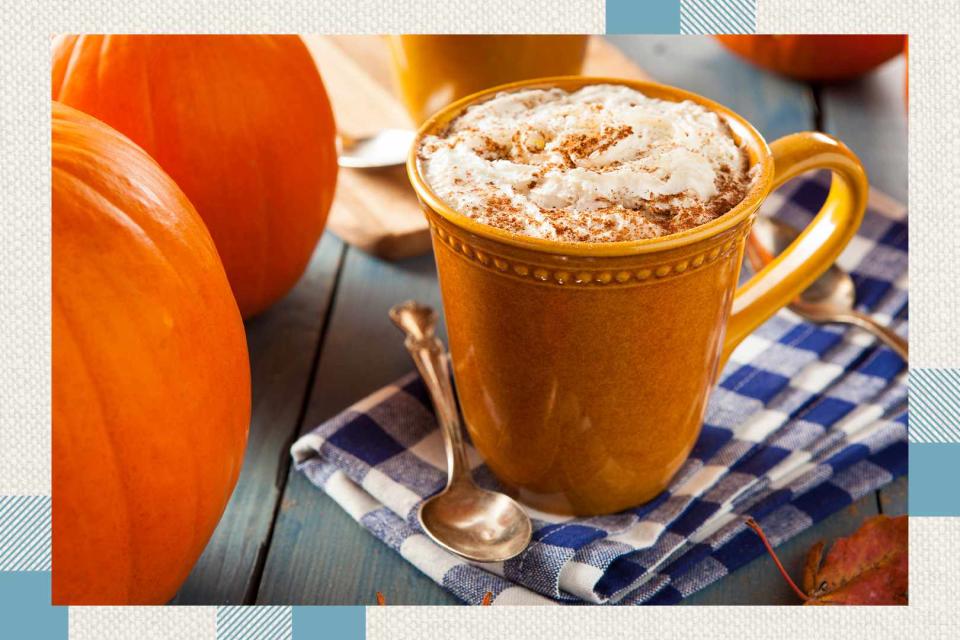Is This the Beginning of the End for Pumpkin Spice?
The infamous PSL and other pumpkin flavored beverages have been fall staples since the early 2000s—but is its peak season already behind it?

bhofack2 / Getty Images
When the pumpkin spice latte made its debut (Starbucks began selling it in 2003), the coffee scene was forever changed. Back then, it was impossible to predict the controversy that would eventually surround the PSL and the impact it would have on the whole food and grocery industry. Today, you can find almost anything, from cereal to dog food, in pumpkin spice flavor during the fall months. While it feels like the flavor is inescapable, the craze may finally be dying down.
When Starbucks launched the PSL in 2003, it was an instant hit, according to Starbucks espresso division product developer Peter Dukes, who helped with the initial marketing and rollout. When you look at the data, the PSL started making gains in Google searches in September 2010 and peaked in 2015 (when "pumpkin spice and everything nice" was the thing to post on social media). Now, the term “pumpkin spice latte” is back to its 2012 volume on Google Trends.
“The pumpkin season seems to get longer and longer,” says Lori Haughey, vice president of retail at Intelligentsia Coffee. “I just wonder at what point it’ll become year-round.”
In 2018, Intelligentsia wanted to sell their own seasonal beverage, but they didn’t want it to fade into the background noise of the pumpkin spice trend. So they created their own take with what they named the avena latte: an oat milk–based drink with warm spices like orange peel, vanilla, ginger, cinnamon, and cayenne. According to Haughey, it took off like wildfire, and now it’s part of their permanent menu.
She suspects people crave drinks like pumpkin spice lattes not solely because they love the taste, but because they get excited about the seasons changing. Starbucks announcing their fall coffee lineup has become a sign that fall is on the horizon. An article from CNBC confirms that this limited-edition strategy is “very simple economics.” Because these products are discontinued for part of the year, we crave them more when they’re available.
:
“Temperatures drop, and people want something that will warm them up, make them feel good,” Haughey says. “Even in our Los Angeles locations [the avena latte] is really popular over ice. But I think just in general, the coffee business picks up this time of year as we ramp up into the fall season—selling more hot drinks and cold drinks across the board.”
It makes sense that most people associate coffee with feelings of comfort. Brewing a cup at home or swinging through a cafe has become routine for many, something to help us get out of bed on chilly mornings. And with so many brands putting out pumpkin-inspired products, it’s difficult to not at least consider adding the flavor to our usual coffee order.
But the constant marketing could be having the opposite effect on some people. In a survey on the fall flavor preferences of 500 participants for Fire Dept. Coffee, it was found that by August, 37% were already tired of hearing about pumpkin spice. Only 14% said they were very likely to purchase pumpkin spice coffee in the next three months, and one in four said they prefer a PSL to a regular latte. A different favorite flavor was chosen among those surveyed: apple pie. Interestingly enough, Starbucks offered an apple crisp macchiato for the first time this year, raising the question of if it could eventually take over as the reigning seasonal beverage.
The Fire Dept. Coffee survey also found that 11% of participants would break up with their partner if they had different views on pumpkin spice, and 10% admitted to arguing about it with a friend or family member. It’s widely known that it’s a touchy subject—but why is that?
This article from Vox argues that the debate isn’t actually about the flavor itself, but that it has roots in sexism and class anxiety. Women primarily make up the demographics of those who enjoy a pumpkin spice beverage, and when women enjoy something, it’s much more likely to be ridiculed for being “basic.” Expressing contempt for a so-called girly food trend like a PSL has become a way to flaunt your “elevated” tastes, to prove you’re above what’s popular.
So what’s next for pumpkin spice?
There isn’t much data on predictions for the pumpkin spice industry, but it’s currently valued around $500 million. In 2017, Nielsen published an analysis that showed sales weren’t rising across all categories (pumpkin-flavored beer, pie, and yogurt were at a downturn, for example). But each year, the craze helps chains like Starbucks and Dunkin’ Donuts substantially increase their week-over-week profits, according to Market Watch. So as long as the financial incentive of selling pumpkin-flavored options still exists, it's very likely you'll hear about the hype when the air gets crisp and the leaves start to change.
“Seasonal drinks are seasonal for a reason,” Haughey says. “The pumpkin will wear off when the novelty wears off, and they will create that buzz to bring it back again.”

